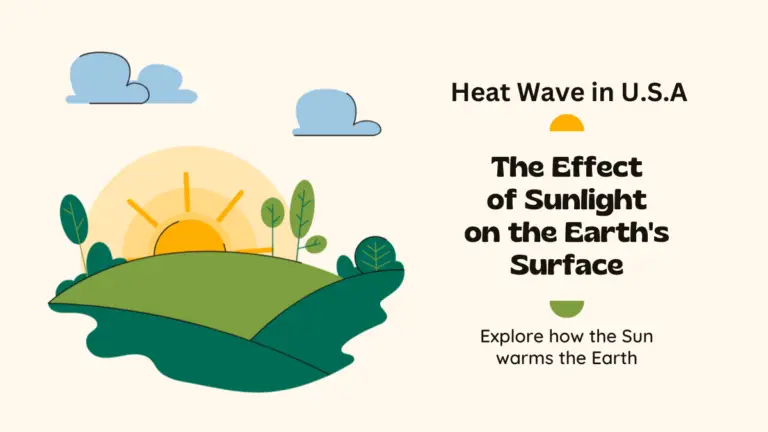What is the highest recorded temperature in the United States: The scorching air temperature of 134 degrees, a record-breaking event, was documented in Death Valley, California, on July 10, 1913. This staggering temperature stands as the highest ever recorded not only in California but also on Earth, making it an awe-inspiring climatic milestone.

The Highest Recorded Temperature in the United States
As of Monday, a staggering 36 million people in the United States, mostly in the southern and western regions, are facing excessive heat advisories. With the Fourth of July holiday just around the corner on Tuesday, record-breaking high temperatures are expected to persist in certain areas. This week, a large portion of the US, spanning from northern California to Washington state, is bracing for scorching heat that will linger for several days. It’s crucial for everyone to take necessary precautions and stay safe during this intense heatwave.
Table of Contents
What is the highest recorded temperature in the United States:
what is the press reports on the heat in America.
- Millions under US heat warnings as record temperatures to continue (The Guardian)
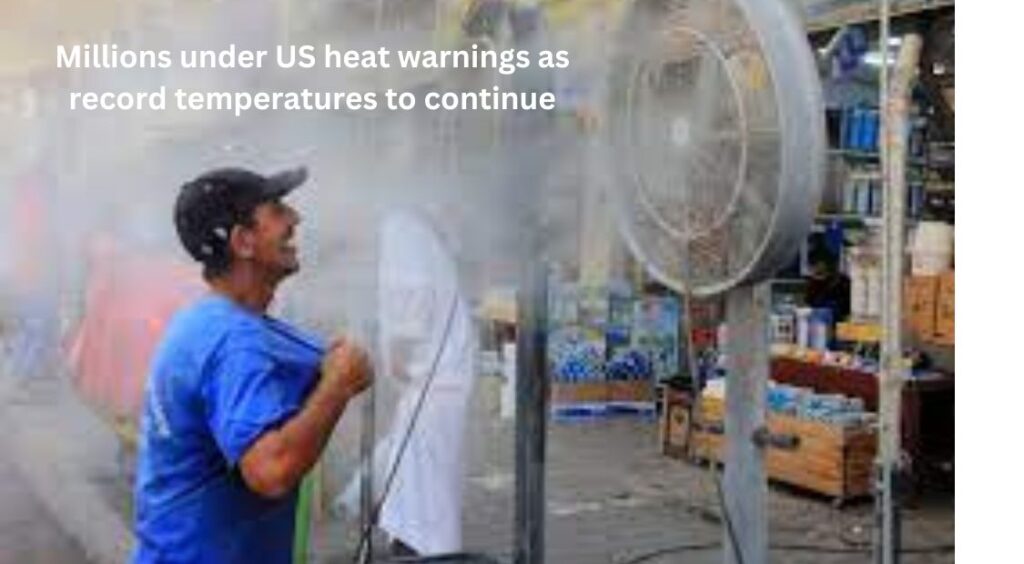
- Dangerous heat wave continues to scorch parts of the U.S. (NBC News)
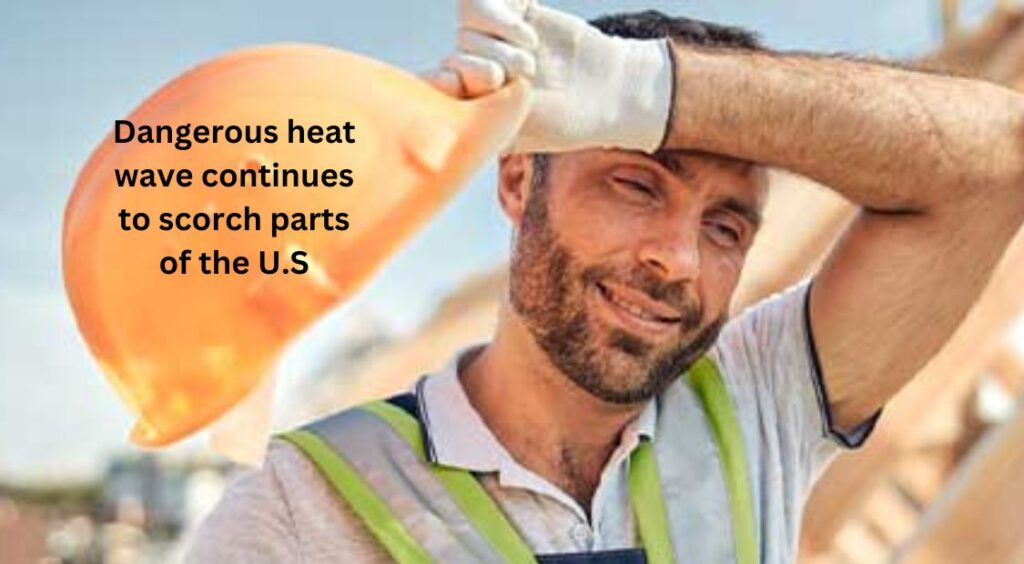
- Triple-digit heat continues to plague parts of the U.S. (CNN)

- With some regions projected to reach 115 degrees, a heat wave is sweltering most of the United States (ABC News).
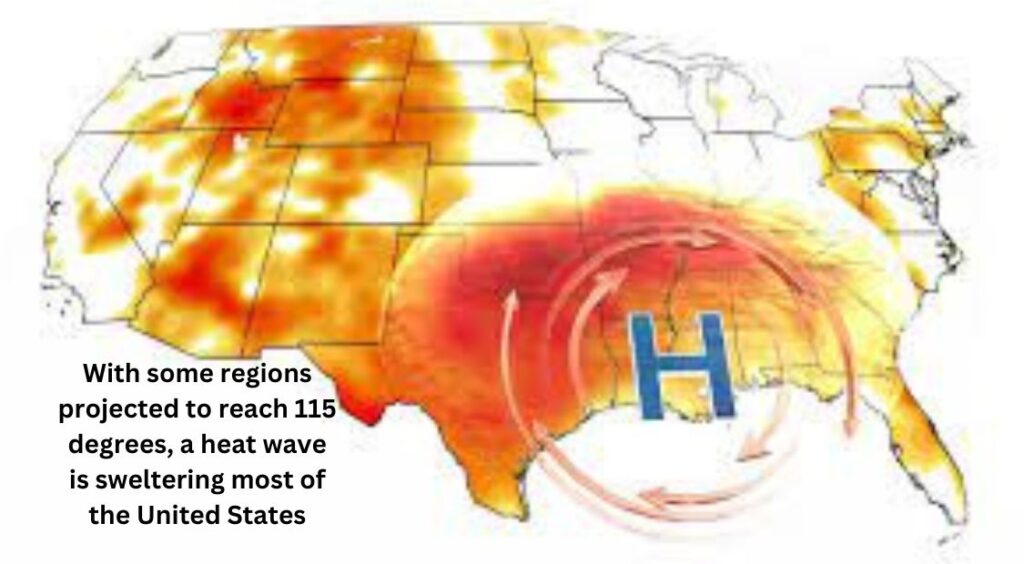
- In many parts of the United States, there are still excessive heat advisories. (CBS News)
As of July 4, 2023, millions of Americans are facing heat warnings or advisories due to an ongoing heat wave across the nation. This prolonged high pressure system is responsible for trapping hot air, leading to soaring temperatures in various regions. Some areas are expected to reach record-breaking highs, with potential temperatures approaching a scorching 115 degrees Fahrenheit.
The heat wave presents a significant health risk, particularly for vulnerable groups such as the elderly, individuals with underlying medical conditions, and those who work or reside outdoors. In light of this, the National Weather Service is urging people to take necessary precautions to stay cool and protect their well-being. Some essential preventive measures recommended include:
Absolutely, staying safe during a heatwave is crucial. Here are some practical tips to beat the heat:
- Stay Hydrated: Even if you don’t feel thirsty, make sure to drink plenty of fluids to stay hydrated and cool.
- Seek Shelter: Whenever possible, stay indoors in air-conditioned buildings to escape the sweltering heat.
- Dress Wisely: If you need to go outside, wear lightweight and light-colored clothing to remain comfortable.
- Limit Physical Activities: Avoid strenuous activities during the hottest parts of the day to prevent overheating.
- Refresh with Showers: Take refreshing, cool baths or showers to lower your body temperature.
- Check on Others: Keep an eye on elderly relatives and neighbors, as they may be more vulnerable to heat-related issues.
- Recognize Warning Signs: Be aware of heat-related symptoms like nausea, disorientation, or dizziness, and seek emergency medical help if necessary.
By following these precautions, we can ensure everyone’s safety and well-being during this challenging time. Let’s take care of ourselves and look out for one another!
Causes and factors that contribute to heat waves in the USA
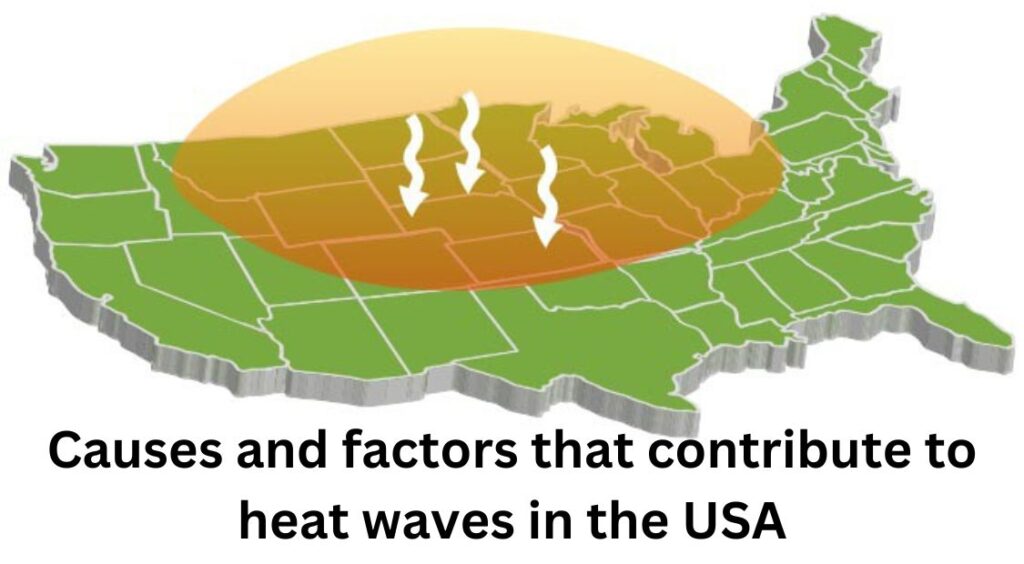
The Highest Recorded Temperature in the United States
The United States may experience heat waves for a variety of reasons. Among the most frequent causes are:
- Warmer ocean temperatures: Higher evaporation can result from warmer water temperatures, which can raise the air’s humidity levels. As a result, it may be harder for people to cool off, which raises the possibility that they’ll get sick from the heat.
- High-pressure ridges: These atmospheric regions where air is sinking are known as ridges of high pressure. The heat that is trapped by the sinking air might raise the surface temperature.
- La Nina: La Nina is a climate pattern that happens when the Pacific Ocean’s surface is colder than usual. In the United States, La Nina frequently causes more frequent and severe heat waves.
- Urban heat islands: Areas of cities that are warmer than the nearby rural areas are known as urban heat islands. This is caused by a variety of elements, including the existence of structures that absorb heat, such as buildings, roads, and other infrastructure. Urban heat islands can increase the threat of heat waves, particularly for city dwellers.
- Climate change: Heat waves are becoming more common, more powerful, and longer-lasting due to climate change. Heat waves will become more likely as Earth’s atmosphere continues to warm.
It is significant to remember that a multitude of factors can generate heat waves, and it is frequently challenging to pinpoint a specific cause. However, some of the most frequent causes of heat waves in the US are those mentioned above.
Heat waves’ effects in the USA
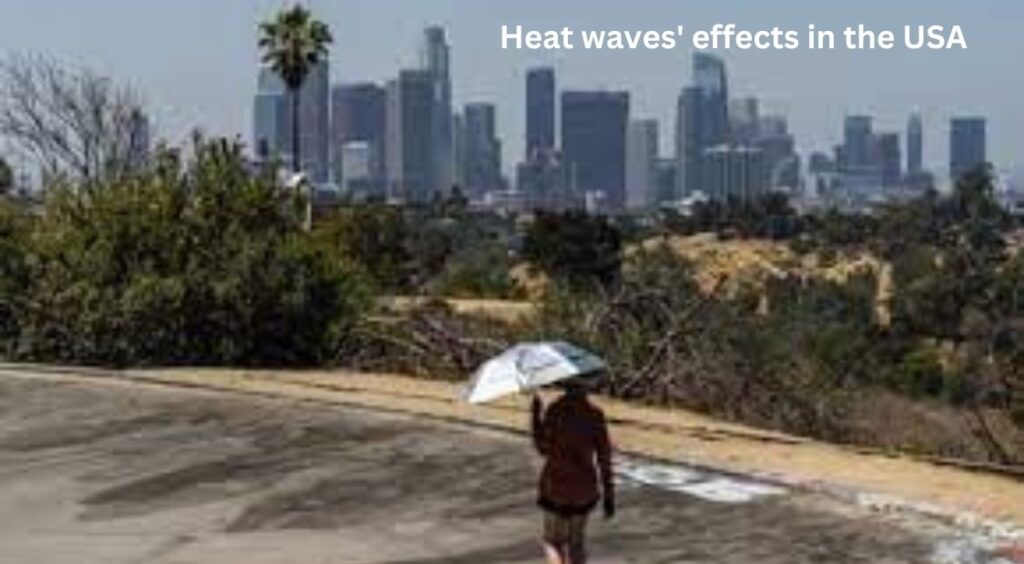
The Highest Recorded Temperature in the United States
The United States is susceptible to serious consequences from heat waves. Among the most frequent effects are:
Increased mortality: With an average annual death toll of over 600, heat waves are the main cause of weather-related deaths in the US. The most vulnerable groups include the extremely young, the elderly, and those with long-term medical issues.
- Increased morbidity: Heat-related disorders like heat exhaustion and heat stroke can also be brought on by heat waves. Numerous symptoms, such as nausea, vomiting, confusion, and dizziness, might be brought on by these disorders. Heat stroke can be lethal in extreme circumstances.
- Reduced productivity: Heat waves can also have a negative impact on output. When working out or exercising in the heat, people may become fatigued, lose their coordination, and find it difficult to focus. This can hinder productivity and increase the likelihood of mistakes and accidents.
- Infrastructure harm: Heat waves can also harm infrastructure, including electricity lines, bridges, and highways. Transportation, communication, and the delivery of water and electricity can all be affected by this.
- Wildfire risk increases: Heat waves can also make wildfires more likely. This is due to the fact that hot, dry weather can foster the perfect environment for flames to start and spread.
Depending on the heat wave’s intensity, the impacted area, and the population, several effects may result from it. However, heat waves can significantly affect the country’s economy, safety, and health.
Heat wave preparedness and response

Image credit goes to American Red Cross.
To protect yourself and your community during a heat wave, it’s crucial to be prepared and respond appropriately. Here are a few advices:
Preparedness
- Remain informed: Keep an eye on weather reports and alerts, and be knowledgeable about the warning signs and symptoms of heat-related disease.
- Plan ahead: Plan how you will stay hydrated and cool during a heat wave. This can be remaining inside, going somewhere cool, or making arrangements for how you will seek medical help if necessary.
- Check on others: People who may be more susceptible to heat-related sickness include elderly neighbours, relatives, and people with chronic health concerns.
- Prepare your home: Make sure your house has a cooling system, such as fans or air conditioning, to prepare your home. Consider opening windows and blinds to bring in fresh air during the cooler hours of the day.
- Have a first-aid kit: Have a first-aid kit on hand: Include rehydrating fluids, cool cloths, and ice packs in your kit to treat heat-related illnesses.
Response
- Keep cool: If you start to feel hot, take a cool shower or bath, drink lots of water, and refrain from doing anything vigorous.
- Find a cool place to go: If your home isn’t air-conditioned, visit a public space with air conditioning, like a library, shopping center, or theater.
- Get medical help: If you develop any heat-related symptoms, such as nausea, confusion, or dizziness, get help right away.
- Help others: If you notice someone who appears to be suffering from the heat, offer to help them cool off and, if necessary, seek medical attention.
By following these tips, you can help ensure that you and your community stay safe during a heat wave.
Case studies of notable heat waves in the USA
Here are some case studies of notable heat waves in the USA:
- The 1980 heat wave: With an estimated 1,250 fatalities, the 1980 heat wave was one of the deadliest in US history. With some regions experiencing temperatures as high as 115 degrees Fahrenheit, the heat wave struck a large portion of the central and eastern United States. The elderly and people with ongoing illnesses were especially susceptible to the heat.
- The 1995 Chicago heat wave: Another deadly heat wave, the 1995 Chicago heat wave claimed 739 lives. Chicago and the neighboring areas were hit by the heat wave, which saw temperatures as high as 106 degrees Fahrenheit. In Chicago’s poorer neighborhoods, where many residents lacked access to air conditioning, the heat wave was especially devastating.
- The 2010 Texas heat wave: With projected damages of $10 billion, the 2010 Texas heat wave was one of the costliest in US history. Many parts of Texas were hit by the heat wave, with some places experiencing temperatures as high as 110 degrees Fahrenheit. The heat wave caused infrastructure, electricity lines, and agriculture damage.
- The 2012 heat wave in the Pacific Northwest: Because it hit a region that isn’t generally known for hot weather, the 2012 heat wave in the Pacific Northwest was one of the most unusual heat waves in US history. As a result of the heat wave, temperatures in Washington, Oregon, and Idaho rose as high as 113 degrees Fahrenheit in some places. 95 people died in Portland, Oregon, as a result of the heat wave.
- The 2021 heat wave in the western USA: The heat wave that hit the western United States in 2021 was one of the biggest in US history, hitting a large portion of the West Coast, the Southwest, and the Great Plains. An estimated 1,000 people died as a result of the heat wave, which also cost billions of dollars in damages. More than 600 people died in California as a result of the heat wave.
These are only a handful of famous heat waves that have occurred in the USA. Heat waves are increasing in frequency and ferocity as a result of climate change. It is crucial to be ready for heat waves and to take precautions to keep safe when they are occurring.
Strategies for reducing and adapting to heat waves in the USA
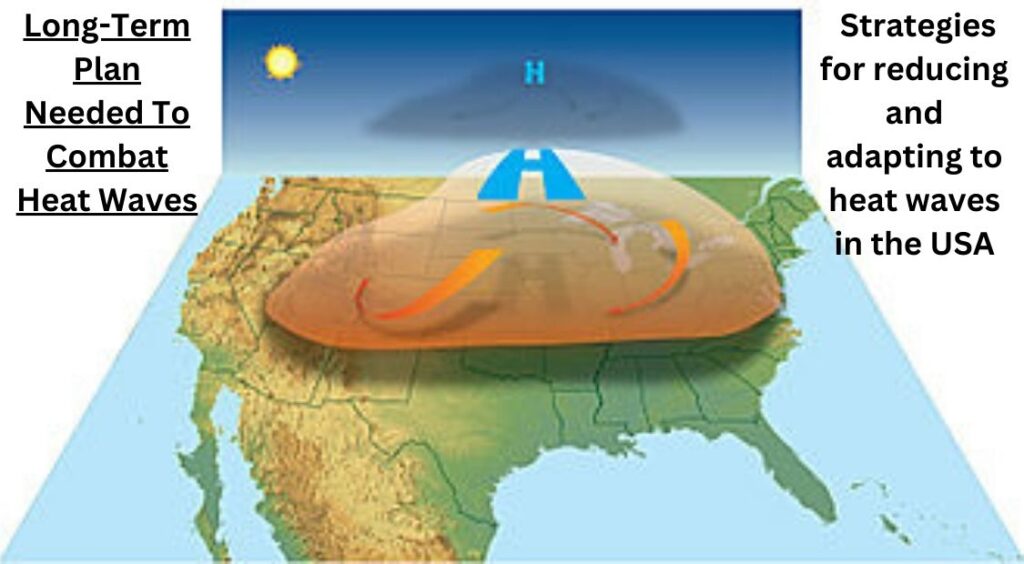
The following are some heat wave mitigation and adaptation measures for the USA:
Mitigation strategies aim to reduce the risk of heat waves by reducing greenhouse gas emissions and mitigating the effects of climate change. Some examples of mitigation strategies include:
- Investing in renewable energy technologies like wind and solar energy.
- Increasing a building’s energy efficiency.
- Planting plants and trees to cool and shade urban areas.
- Lowering air pollution, which traps heat and exacerbates the danger of heat waves.
Adaptation strategies aim to help people and communities cope with the impacts of heat waves. Some examples of adaptation strategies include:
- Expanding the availability of air conditioning and other cooling techniques.
- Establishing public cooling facilities in places without air conditioning.
- Teaching people how to keep safe and the dangers of heat waves.
- To warn people of heat waves, early warning technologies are being developed.
- Improving water and power systems to make infrastructure more heat wave resistant, for example.
It is significant to stress that initiatives for reducing the risks associated with heat waves must include both adaptation and mitigation measures. While adaptation measures can assist people and communities deal with the effects of heat waves in the near term, mitigation efforts can help lower the likelihood of heat waves over the long term.
The following are some particular instances of mitigation and adaptation measures that have been put into practice in the USA:
Mitigation:
- The state of California has set a target of bringing greenhouse gas emissions by 2030 down by 40% below 1990 levels.
- In addition to making investments in solar and wind energy, the city of Los Angeles has also put in place a variety of energy-saving initiatives.
- In the last few years, the city of Chicago has planted over 70,000 trees to help shade and cool urban areas.
Adaptation:
- A programme run by the state of Texas offers low-income households money to help them pay for air conditioning.
- hoenix features a number of open public cooling facilities that are open to locals during heat waves.
These are just a handful of the numerous mitigation and adaptation measures being used in the USA to reduce the dangers associated with heat waves. It is crucial to keep funding these tactics as long as climate change exists in order to keep people safe.
For more information on What is the highest recorded temperature in the United States keep reading our blogs.
Author: allykazmi
